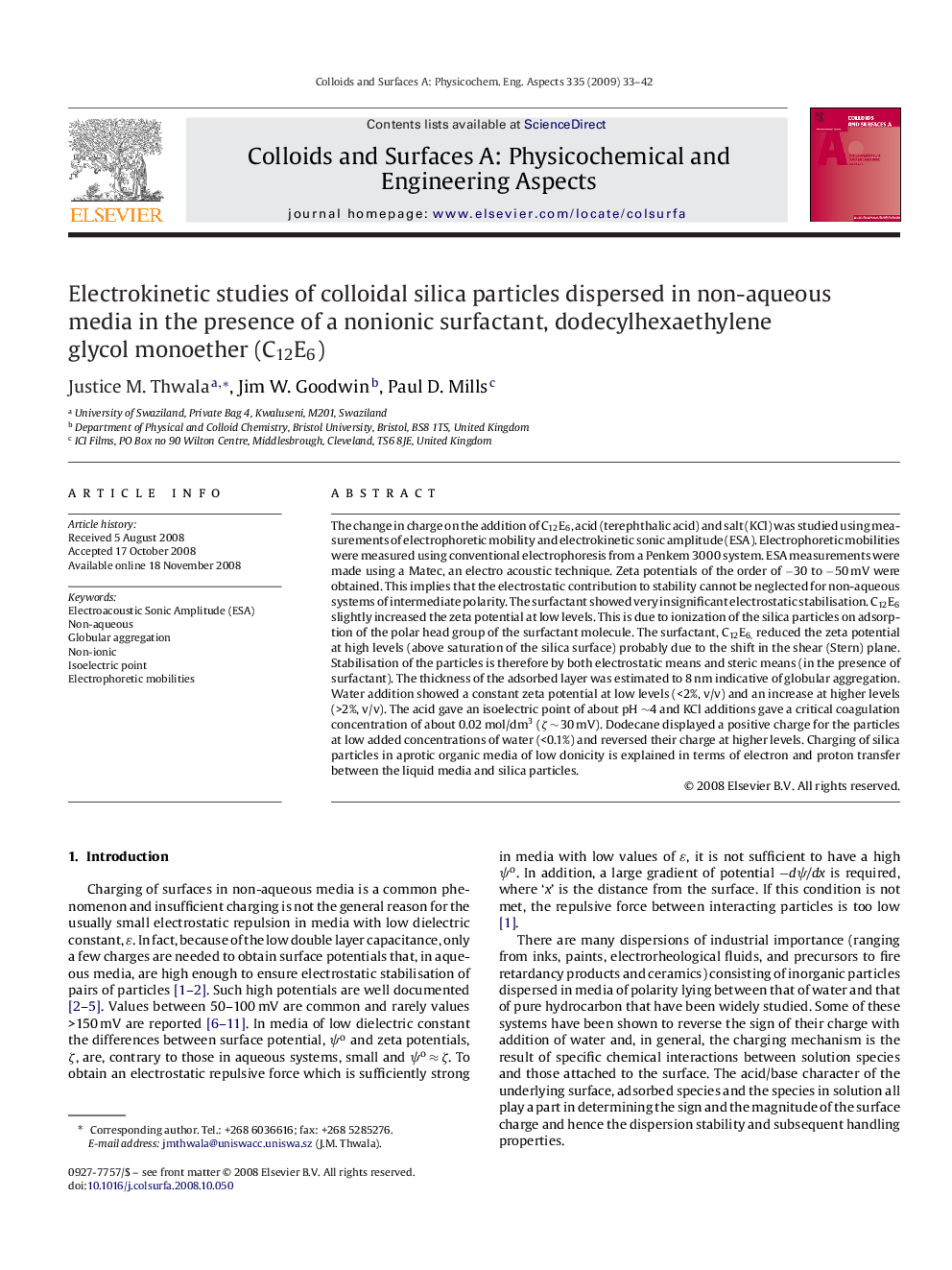| Article ID | Journal | Published Year | Pages | File Type |
|---|---|---|---|---|
| 596173 | Colloids and Surfaces A: Physicochemical and Engineering Aspects | 2009 | 10 Pages |
The change in charge on the addition of C12E6, acid (terephthalic acid) and salt (KCl) was studied using measurements of electrophoretic mobility and electrokinetic sonic amplitude (ESA). Electrophoretic mobilities were measured using conventional electrophoresis from a Penkem 3000 system. ESA measurements were made using a Matec, an electro acoustic technique. Zeta potentials of the order of −30 to −50 mV were obtained. This implies that the electrostatic contribution to stability cannot be neglected for non-aqueous systems of intermediate polarity. The surfactant showed very insignificant electrostatic stabilisation. C12E6 slightly increased the zeta potential at low levels. This is due to ionization of the silica particles on adsorption of the polar head group of the surfactant molecule. The surfactant, C12E6, reduced the zeta potential at high levels (above saturation of the silica surface) probably due to the shift in the shear (Stern) plane. Stabilisation of the particles is therefore by both electrostatic means and steric means (in the presence of surfactant). The thickness of the adsorbed layer was estimated to 8 nm indicative of globular aggregation. Water addition showed a constant zeta potential at low levels (<2%, v/v) and an increase at higher levels (>2%, v/v). The acid gave an isoelectric point of about pH ∼4 and KCl additions gave a critical coagulation concentration of about 0.02 mol/dm3 (ζ ∼ 30 mV). Dodecane displayed a positive charge for the particles at low added concentrations of water (<0.1%) and reversed their charge at higher levels. Charging of silica particles in aprotic organic media of low donicity is explained in terms of electron and proton transfer between the liquid media and silica particles.
